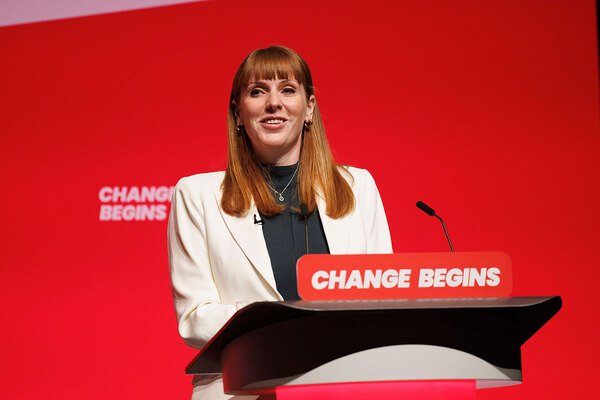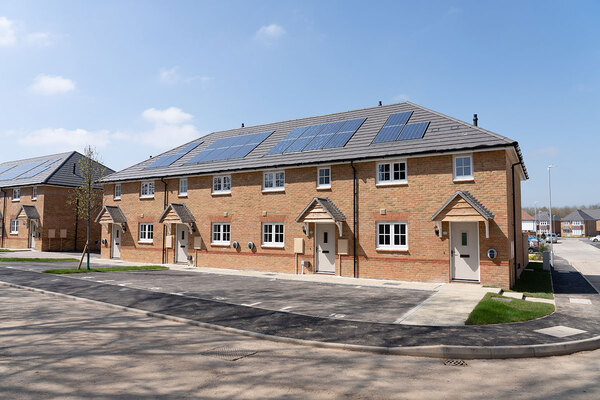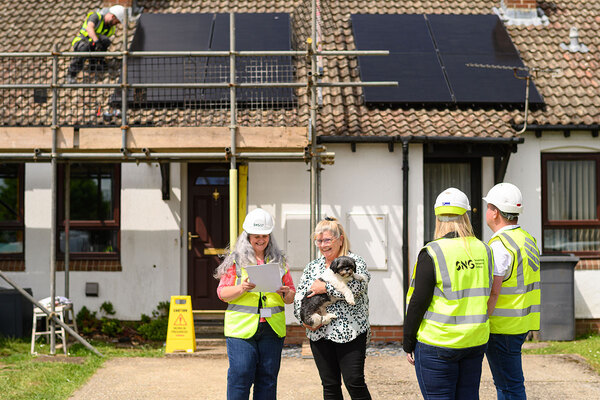You are viewing 1 of your 1 free articles
What did conference tell us about Labour’s housing plans?
We have to do some reading between the lines to gather the key takeaways from this week’s Labour Party Conference, writes Inside Housing columnist Jules Birch
For the most part, this was a Labour conference of nudges and winks rather than major announcements. That is no coincidence because major decisions across the government are being left for the Budget and one-year Spending Review next month and the multi-year Spending Review to follow in the spring.
So for all the debate at what looked like an unprecedented number of fringe meetings on housing in Liverpool, for all the promises from the conference podium of brownfield passports and help for homeless veterans and care leavers, there was comparatively little that signalled the direction the new government intends to take.
The one exception was not a surprise: the reinstatement by net zero secretary Ed Miliband of the 2030 target to bring all rented homes up to a minimum level of Energy Performance Certificate (EPC) Band C by 2030. The announcement reinstates an earlier target for minimum energy efficiency standards that was scrapped by Rishi Sunak and extends it to social and private rented homes.
That will have major implications, given that the costs of retrofitting social housing alone far exceed Labour’s scaled-back plans for green grants and loans.
Without a boost, this could accelerate the sell-off of older private rented stock and encourage social landlords to consolidate theirs, at the same time as it focuses their attention even more on improving their existing homes rather than building new ones.
On new homes, the big question for me is the relationship between Labour’s target of 1.5 million new homes in this parliament and its manifesto promise on affordable and social housing.
“In the short term, that could mean some reportioning of departmental budgets, but the real question is what it means for the long term”
The conference speech by deputy leader Angela Rayner seemed to suggest that the second will be delivered via planning gain associated with the first. “A new planning framework will unlock the door to affordable homes and provide the biggest boost to social and affordable housing in a generation,” she said.
However, most serious analysts would argue that the first depends on the second and point out that housebuilding at that level has never happened without a substantial contribution from public housing.
And there was an intriguing hint from Ms Rayner at a Shelter fringe meeting that more investment could be on the way. “I actually think it’s a moral mission with the Labour government to recognise the problem and to build the social housing we need,” she said.
“I’ve been honest about not putting a figure on that today, because there’s a lot of moving parts within that. But hopefully at the spending review, you’ll see that this government is really serious that we’re going to build those houses we desperately need.”
In the short term, that could mean some reportioning of departmental budgets, but the real question is what it means for the long term.
Which brings me to the most important nudge and wink of the week: the line in the speech by chancellor Rachel Reeves, repeated in media interviews, that “it is time that the Treasury moved on from just counting the costs of investments in our economy to recognising the benefits, too”.
The intention seems to be to create space for increased capital investment within the government’s self-imposed fiscal straitjacket.
In its manifesto, Labour proposed two fiscal targets that have to be met by the end of the five-year forecast period. First, balancing the current budget so that day-to-day costs are met by revenues. Second, that debt should be falling as a share of GDP.
On the face of it, the second of these leaves little room for capital investment because it counts the cost of the investment without taking account of the value of the assets created (and in the case of housing, the income stream from future rents).
“The intention seems to be to create space for increased capital investment within the government’s self-imposed fiscal straitjacket”
We will have to wait until the Budget to find out exactly what the chancellor meant, although Labour’s manifesto had already hinted at a change to the restrictive ‘public sector net debt’ measure of debt.
A conservative (with a small c) interpretation might be to take more account of how the Office for Budget Responsibility (OBR) scores the benefits of public investment in its forecasts, but that would not create much space for extra investment.
A more radical one would be a change in the fiscal rules to adopt a different measure of debt, either public sector net financial liabilities (PSNFL) or public sector net worth (PSNW).
These are already forecast by the OBR in the economic and fiscal outlook reports it publishes alongside Budgets. The last one from spring 2024 showed far greater headroom under both of the alternative measures than under PSND.
Both were explored in detail in a 2019 report from the Resolution Foundation that now carries extra credibility for being co-authored by the current head of the OBR, Richard Hughes.
Former shadow chancellor John McDonnell committed himself to using PSNW at the time, something that might seem enough to discredit the whole idea in the eyes of the current leadership but it now seems as though it could be back on the agenda.
Adopting either measure, but particularly PSNW, might not be a silver bullet for housing investment in itself, but it could change the terms of the debate about what the Treasury sees as value for money.
There could also be important implications for the many wheezes previous governments have used to fund off-balance sheet loans and guarantees.
Schemes like the Help to Buy and the private finance initiative would look a lot less attractive under a regime that took account of assets as well as liabilities. So could the privatisation and the Right to Buy.
Maybe it could even facilitate a renewed debate about changing the rules on what counts as public borrowing, which, by contrast with most of the developed world, discriminate against council housing.
As I argued back in 2019, no longer a liability but an asset too, investment in social housing could begin to make as much sense outside the sector as it does inside it.
Long and disappointing experience would suggest a need to temper expectations, but this could be an important moment.
Jules Birch, columnist, Inside Housing
Sign up for our daily newsletter
Already have an account? Click here to manage your newsletters













